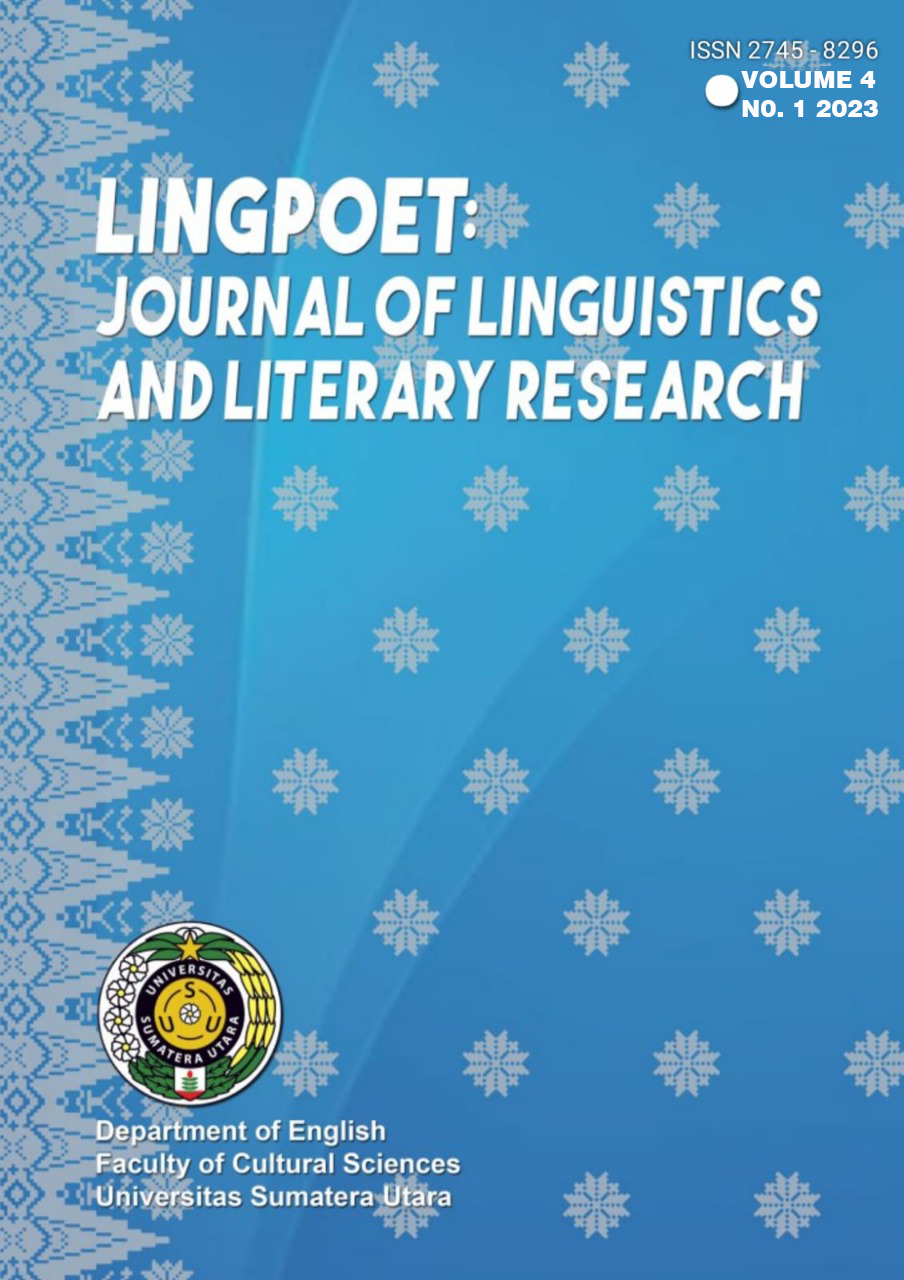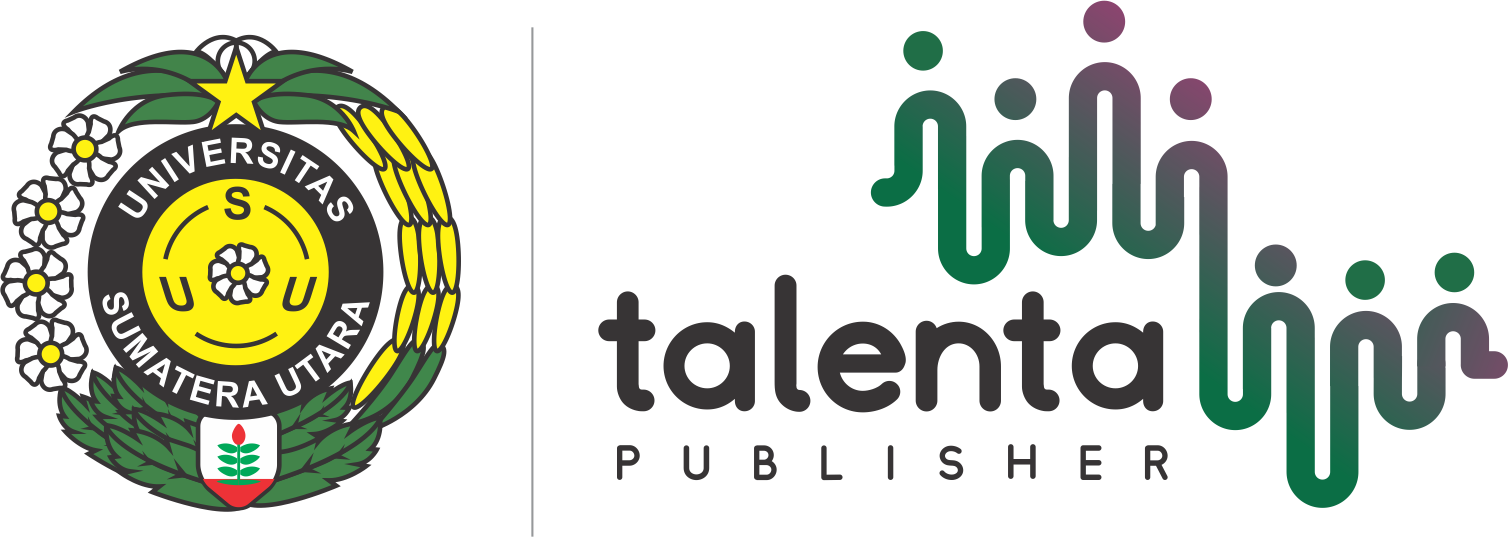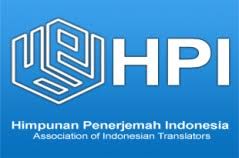Dogs in Batak Simalungun and English Proverbs
Keywords:
Dog, Proverbs, Meaning Features, Batak Simalungun, EnglishAbstract
This article discusses dog metaphors in Batak Simalungun (BS) and English (ENG) proverbs. This study aims to identify the meaning features and interpret the perception of the people who speak both languages towards dogs reflected in their proverbs. The research used a qualitative descriptive method. Data were collected from two sources, namely written sources and oral sources. The data were analyzed with an anthropological linguistic approach, namely looking at the meaning features of dogs in both languages and interpreting them in the cultural context of the speakers. The results show that the dominating dog meaning feature in the proverbs of both languages is the nature of dogs. The meaning feature found in BS proverbs is only one meaning feature, which is about dog behavior. The dog meaning features in ENG proverbs have six meaning features, including dog traits (i.e., behavior, size, quality, and condition), body parts, position, age, dog day, and love for dogs. The things that influence the differences in the meaning features of dogs in the proverbs of the two languages consist of the speakers' environmental factors and social factors. The similarity of perception towards dogs in the culture of BS speakers and ENG speakers is the position of dogs, which are referred to as human friends and pets.
Downloads
References
Abrahams, R. D. (1982). Proverbs and Proverbial Expressions, in Dorson, R. M. (ed.). Folklore and Folklife: An Introduction. University of Chicago Press.
Amalia, R. (2022). Hari Anjing Sedunia Diperingati Setiap 26 Agustus, Begini Sejarah Anjing Jadi Sahabat Manusia. Grid Kids. Grid Kids. https://kids.grid.id/read/473446871/hari-anjing-sedunia-diperingati-setiap-26-agustus-begini-sejarah-anjing-jadi-sahabat-manusia?page=all
Astari, D., Panjaitan, N. Y., & Mulyadi, M. (2022). Metafora Binatang Dalam Peribahasa Dialek Melayu Deli. Basastra: Jurnal Bahasa, Sastra, Dan Pengajarannya, 10(2), 4.
Bachrun, N. A., & Suhandano. (2023). Metaphorical Conceptualization Employed by Animal Lexicon “Dog†in English and Indonesian Proverbs: A Comparative Study. Journal of Social Research, 2(1–9). https://ijsr.internationaljournallabs.com/index.php/ijsr
Baharuddin, Isa, D. S., Rizal, Y., & Damanik, R. (1997). Limbaga (peribahasa) bahasa Simalungun. Pusat Pembinaan dan Pengembangan Bahasa, Departemen Pendidikan dan dan Kebudayaan.
Chomsky, N. (2006). Language and mind. Cambridge University Press.
Collis, H., & Risso, M. (1992). 101 American English proverbs: Understanding language and culture through commonly used sayings.
Djajasudarma, F. (2009). Semantik 1. PT. Refika Aditama.
Kastri, E. M. (2022). Metafora Hewan dalam Peribahasa Lampung. Jurnal Kata: Bahasa, Sastra, Dan Pembelajarannya, 10(2), 151–161.
Kovecses, Z. (2008). Metaphor and emotion.
Kurin, R. (2004). Safeguarding Intangible Cultural Heritage in the 2003 UNESCO Convention: A critical appraisal. Museum International, 56(1–2), 66–77.
Lakoff, G., & Johnson, M. (1980). The metaphorical structure of the human conceptual system. Cognitive Science, 4(2), 195–208.
Mason, P. (2020). Tourism impacts, planning and management. Routledge.
Mieder, W. (1993). “The Only Good Indian Is a Dead Indianâ€: History and Meaning of a Proverbial Stereotype. Journal of American Folklore, 38–60.
Mieder, W. (2021). International proverb scholarship: An updated bibliography. Proverbium-Yearbook, 38, 491–532.
Nirmala, K. (2017). Employability Skills of Arts and Science Graduates in Cauverydelta Region. Doctoral dissertation, Dept of Management, Pondicherry University.
Riyanto, A. A. (2018). Peribahasa Inggris Berunsur Nama Hewan: Analisis Referen, Klasifikasi, Dan Fungsi [Doctoral dissertation]. Universitas Gadjah Mada.
Sibarani, E. M., Nadial, M., Panggabean, E., & Meryana, S. (2013). A study of parsing process on natural language processing in bahasa Indonesia. 2013 IEEE 16th International Conference on Computational Science and Engineering.
Sibarani, R. (2013). Pendekatan Antropolinguistik Dalam Menggali Kearifan Lokal Sebagai Identitas Bangsa. Prosiding The 5th International Conference on Indonesian Studies: “Ethnicity and Globalizationâ€.
Turner, M. (1990). Aspects of the invariance hypothesis. Cognitive Linguistics, 1(2), 247–255.
Vansina, J. M. (1985). Oral tradition as history. Univ of Wisconsin Press.
Wijana, I. D. P. (2023). Target Domains of Ayam “Chicken†In Indonesian Proverbs. Jurnal Kabastra, 1(2), 105–114.
Downloads
Published
How to Cite
Issue
Section
License
Copyright (c) 2024 LingPoet: Journal of Linguistics and Literary Research

This work is licensed under a Creative Commons Attribution-ShareAlike 4.0 International License.













